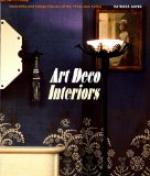The progress of art and culture was always from the East and moved slowly. Do not go so far back as the thirteenth century. James I of England owned no stockings when he was James VI of Scotland, and had to borrow a pair in which to receive the English ambassador.
In the eleventh century Italy manufactured her own silks, and into them were woven precious stones, corals, seed pearls and coloured glass beads which were made in Greece and Venice, as well as gold and silver spangles (twelfth and thirteenth centuries).
Here is an item on interior decorations from Proverbs vii, 16; “I have woven my bed with cords, I have covered it with painted tapestry brought from Egypt.” There were painted tapestries made in Western Europe at a very early date, and collectors eagerly seek them (see Plate XIV). In the fourteenth century these painted tapestries were referred to as “Stained Cloth.”
Embroidery as an art, as we have already seen, antedates silk weaving. The youngest of the three arts is tapestry. The oldest embroidery stitches are: “the feather stitch,” so called because they all took one direction, the stitches over-lapping, like the feathers of a bird; and “cross-stitch” or “cushion” style, because used on church cushions, made for kneeling when at prayer or to hold the Mass book.
Hand-woven tapestries are called “comb-wrought” because the instrument used in weaving was comb-like.
“Cut-work” is embroidery that is cut out and appliqued, or sewed on another material.
Carpets which were used in Western Europe in the Middle Ages are seldom seen. The Kensington Museum owns two specimens, both of them Spanish, one of the fourteenth and one of the fifteenth century.
In speaking of Gothic art we called attention to the fostering of art by the Church during the Dark Ages. This continued, and we find that in Henry VIII’s time those who visited monasteries and afterward wrote accounts of them call attention to the fact that each monk was occupied either with painting, carving, modelling, embroidering or writing. They worked primarily for the Church, decorating it for the glory of God, but the homes of the rich and powerful laity, even so early as the reign of Henry III (1216-1272), boasted some very beautiful interior decorations, tapestries, painted ceilings and stained glass, as well as carved panelling.
Bostwick Castle, Scotland, had its vaulted ceiling painted with towers, battlements and pinnacles, a style of mural decoration which one sees in the oldest castles of Germany. It recalls the illumination in old manuscripts.
CHAPTER V
CANDLESTICKS, LAMPS, FIXTURES FOR GAS AND ELECTRICITY, AND SHADES
Candlesticks, lamps, and fixtures for gas and electricity must accord with the lines of your architecture and furniture. The mantelpiece is the connecting link between the architecture and the furnishing of a room. It is the architect’s contribution to the furnishing, and for this reason the keynote for the decorator.




